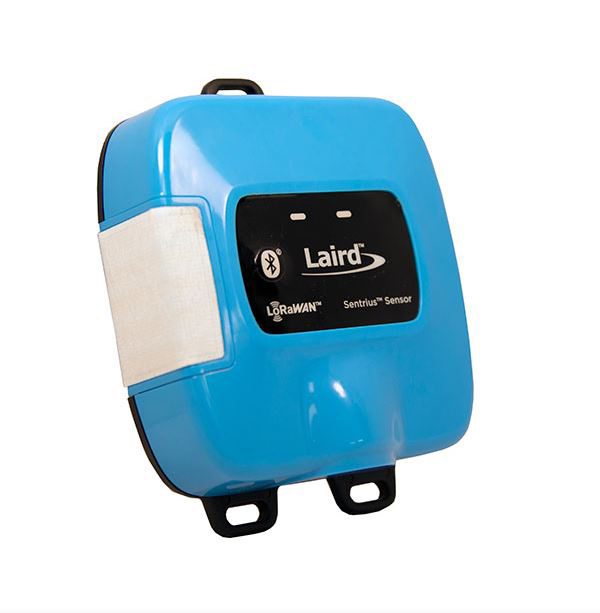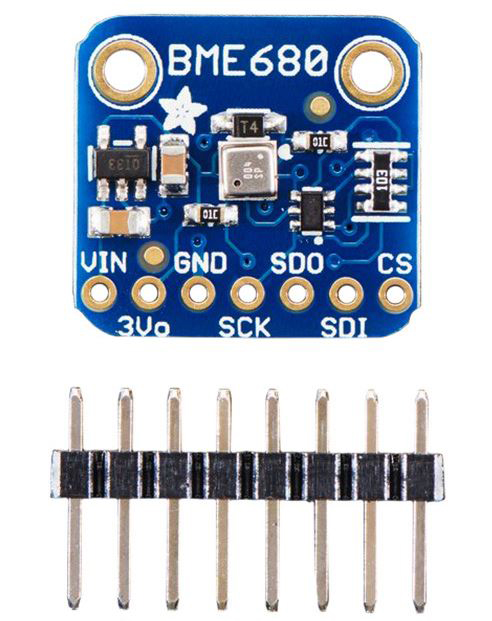
Proliferation of IoT drives greater diversity in sensors
By Robbie Paul, director, IoT business development at Digi-Key Electronics
IoT Supply Chain AI distribution IoT machine learningApplications diversify with trends in health & safety, miniaturization, fusion & digitization, AI
With the proliferation of IoT, the need for a greater diversity of sensors has exploded across all industries. At Digi-Key we’ve seen firsthand how this demand has skyrocketed. As a component distributor, we sell more than 60-million sensors each year, and have more than 130,000-part numbers available, and counting. Temperature sensors are by far the most popular, followed by accelerometers, driven by the popularity of activity tracking IoT devices. Environmental sensors are third, focusing on sensors measuring pressure and humidity.

Laird Sentrius RS1xx industrial humidity sensor.
Source: Laird Connectivity
In addition to demand, we can expect sensor and sensor applications to continue to diversify as new trends in health and safety, miniaturization, fusion and digitization, and artificial intelligence and machine learning continue to emerge.
Health and safety trends
The COVID-19 crisis has brought several IoT solutions to the forefront. The overarching goal of these solutions is to assist in preventing the spread of the virus, which can be transmitted by air, as well as by touch or on surfaces. IoT solutions can mitigate some of these risks by monitoring and controlling key transmission modalities.
The EPA has reported that Americans are spending 90% of their time in buildings “where the concentrations of some pollutants are often two to five times higher than typical outdoor concentrations.” IoT solutions for air quality monitoring include CO2 and particulate matter sensors in addition to the more common sensors that measure temperature and humidity.
Creating a safe environment for customers and employees is essential to doing business. For many businesses, implementing social distancing solutions is now necessary to control the flow of customers through a store. This provides a unique opportunity for sensors as there are several occupancy monitoring solutions available that make it easy to keep a constant, accurate count of the number of people in, say, a retail establishment, and that also provides a notification as full capacity is approached. As public life continues to reopen, optical sensors are a key piece of the occupancy monitoring solution and are being used in a novel way.
Sanitation is also essential to maintaining a safe and healthy work environment during the pandemic. Establishing a cleaning and sanitizing schedule is relatively easy, but maintaining and showing compliance to outside agencies without disrupting productivity can be a challenge. Even a simple system with high-visibility indicators to notify staff to begin scheduled cleaning processes coupled with automatic data recording and collection can go a long way to ensuring compliance. Furthermore, with optical sensors, non-contact switching and activation can be enabled and used to control almost anything. As policies and procedures continue to evolve throughout the COVID crisis, optical sensors will be more important than ever for monitoring and controlling for health and safety.
AI & machine learning for sensor deployment
Artificial intelligence and machine learning are starting to play greater roles in sensor deployment. One example of this is the Google Nest, which sets temperatures based on its surroundings, when people are coming and going, whether it’s a weekday or weekend, etc. The Nest device is continually gathering data, analyzing it, and sending it to a cloud server to notify the user of its findings.
Not only does deep data analysis contribute to greater convenience for the user, but it also results in significant cost savings. A great example of this is some of the commercial applications for sensors that we’ve seen in the agriculture industry. Specifically, we’re seeing a lot of farmers use moisture sensors to manage their irrigation systems. These sensors arm the farmers with rich data and automatically turn on the irrigation system if they detect the crops need moisture. As sensors continue to progress, we expect that this intelligence and connectivity will be taken to a higher level. For example, tapping into the Weather Channel data, learning it is going to rain tomorrow, and determining not to activate the sensors. We’ll also see the fusion trend here – combining temperature, humidity and pressure to give a more complete environmental picture.
The bottom line is we’re using sensors today in a very rudimentary way. We take all of the data but don’t actively use a majority of it. Predictive maintenance like the commercial agriculture applications represent the proliferation of sensors and data – and how it can be utilized better. Artificial intelligence and machine learning will also be integral to helping us make data richer and more useful – and that will make all the difference in the world.

Adafruit BME680 temperature, humidity, pressure and gas sensor.
Source: Adafruit
Other sensor trends
Miniaturization and sensor fusion are two interwoven trends that also continue to dominate. We’re not only making sensors smaller, but also integrating multiple sensors into one single, small footprint. For example, temperature, pressure and humidity sensors can all be combined together in one package and used in compact environmental sensing applications.
We’ve also seen a greater move toward digitization in sensors as well. Typically, sensors have various analog output types, but by moving to digital outputs, integration is much smoother with other components like microprocessors. Whereas previously we had to convert from analog to digital, the widespread use of digital sensors is now enabling us to eliminate some components from sensor designs, further contributing to miniaturization.
Diversifying sensor applications
As IoT continues to grow on every front, and new sensor trends emerge, there’s no question the applications for sensors continue to diversify as well. Sensors are moving up the value chain and becoming more like stand-alone finished devices. They are incorporating intelligence and connectivity and come in compact packages for indoor or outdoor use. This allows for these sensors to be deployed directly in the field by systems integrators and solutions providers since the engineering and development work has already been done by the OEM. With a little programming these versatile devices can be customized for any application.
As the applications for sensors diversify, we’ve noticed the types of customers coming to our sites has diversified along with it. The general trend we are seeing industry-wide is the move toward greater integration in all engineering applications. The proliferation of IoT has also driven some of the most innovative sensor technologies on the market.

Robbie Paul, director of IoT business development, Digi-Key.
We’re seeing more and more boards that can be modified and used to create robust IoT systems and products, like the Adafruit BME680 breakout board, DFRobot breakout board, and BMI090L shuttle board. IoT continues to drive sensor technology and connectivity for what is ultimately a richer end product. It’s exciting to see all of the innovation happening in this space.
———————————-
Robbie Paul is the director of IoT business development at Digi-Key Electronics, one of the world’s largest, full-service distributors of electronic components.
